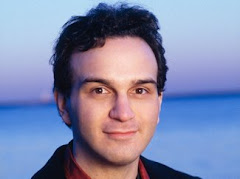After the unforgettable Italian-themed concert the week before, maestro Roberto Abbado returned with a German-French night with the MPO. The first half comprised a potpourri of Wagner’s greatest orchestral hits from his mystical and timeless opera Parsifal.
Abbado opened with the Prelude to Act 1. From the slow burning Love Feast Motif throughout the undulating crescendi and diminuendi, he sustained great sensual tension via vibrato from the MPO strings, which played with more intensity than usual. The woodwind and brass also took to their roles very well, with especially rounded tones from the latter contributing wonderful sound colours of solemnity and mystical beauty.
Taking a quick break, Abbado returned for the Prelude to Act 3 and the Good Friday Music. His performance was something to be cherished. The Prelude to Act 3 depicts Parsifal’s search for the holy spear, through the dangerous realms of the evil Klingsor.
Abbado led the orchestra in a performance that felt almost as epic as the full opera. There was a perfect sense of pace and the dynamics were deftly graded. Most importantly, when the only one true fortissimo in the work came, one had no doubt this was the true climax of the piece, giving a sense of the music’s grand architecture, that is so vital, but so often missing, in performances of Wagner.
There was no let up in energy for Berlioz's Symphonie fantastique. The real fun may be saved for the last two movements of the work, but the earlier three movements possessed a bewitching intensity. There was fragility in the first movement's portrayal of the swooning artist, always on the brink of darkness, with the violins often thinning to a trembling thread.
Duetting harps opened the second movement Un bal with the lilting waltz carried in the strings. The waltz phrase lacked some elegance as Abbado chose to seriously under-play the rallentando marking. The idée fixe was heard in the clarinets before matters concluded in a waltzing frenzy, taken at an extremely fast pace. Exaggerating the animez and serrez markings superbly, Abbado conjured up the brilliant impressions of the whirling dancers almost waltzing out of control.
The expansive Scène aux champs presented a captivating pastoral vision, with the cor anglais answered in the offstage oboe. By the movement’s end, the forlorn cor anglais calls were only countered by the increasingly menacing thunder in the timpani, signalling the impending storm.
The terrifying opium-induced dream world, and the Marche au supplice were given with good power and kinetic energy, though the winds and brass were not encouraged to almost double-dot their quaver and semiquaver figurations. Clarinetist Gonzalo Esteban gave one last appearance of the idée fixe before it was cut short by the fall of the guillotine.
In the concluding Songe d'une nuit du sabbat, the idée fixe, once a statement of beauty and nobility, has been reduced to the grotesque; its reappearances on the E flat clarinet now thin, shrill and distasteful.
The myriad of ingenious effects, from the rumbling Dies Irae in the low brass to the col legno strings and bells which were slightly off-pitch, washed over the DFP Hall in a stunning display of sheer intensity of sound.
This was quite a fantastic performance of the Symphonie fantastique by maestro Abbado, although it may not have effaced memories of an even more wonderful interpretation, that of Fabio Luisi at gala concert here in September 2014.
Subscribe to:
Post Comments (Atom)
















































No comments:
Post a Comment